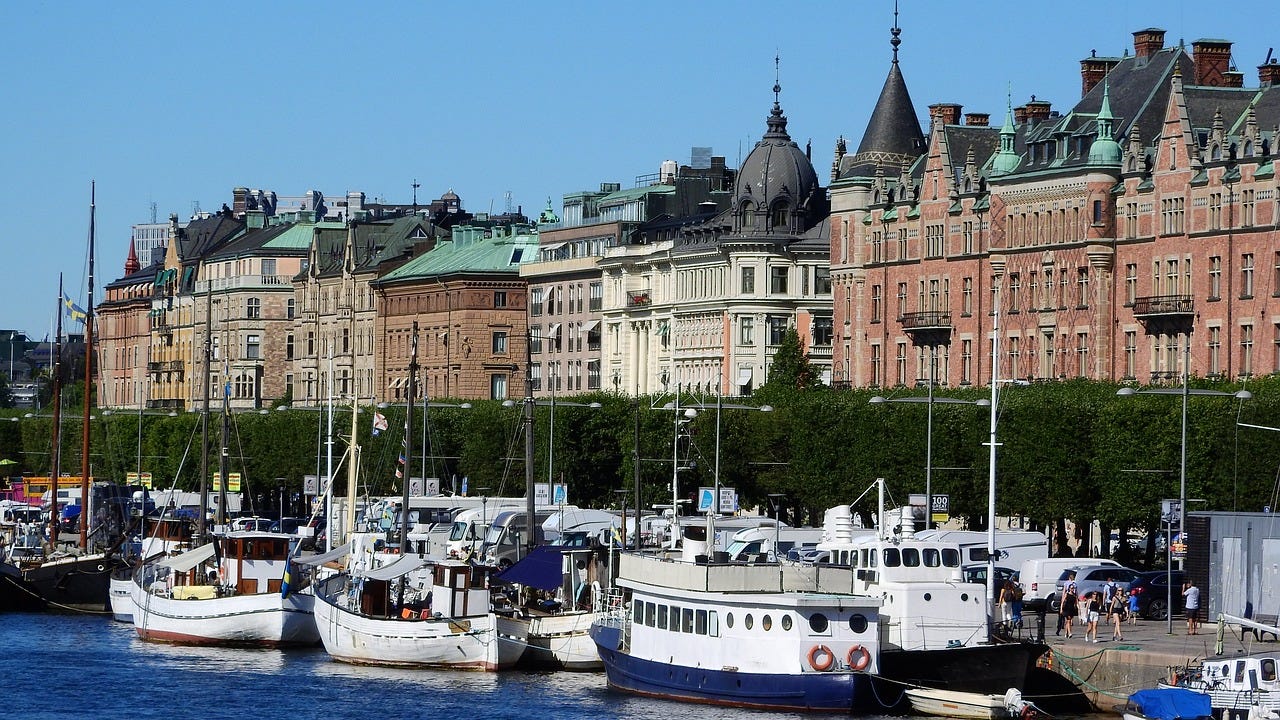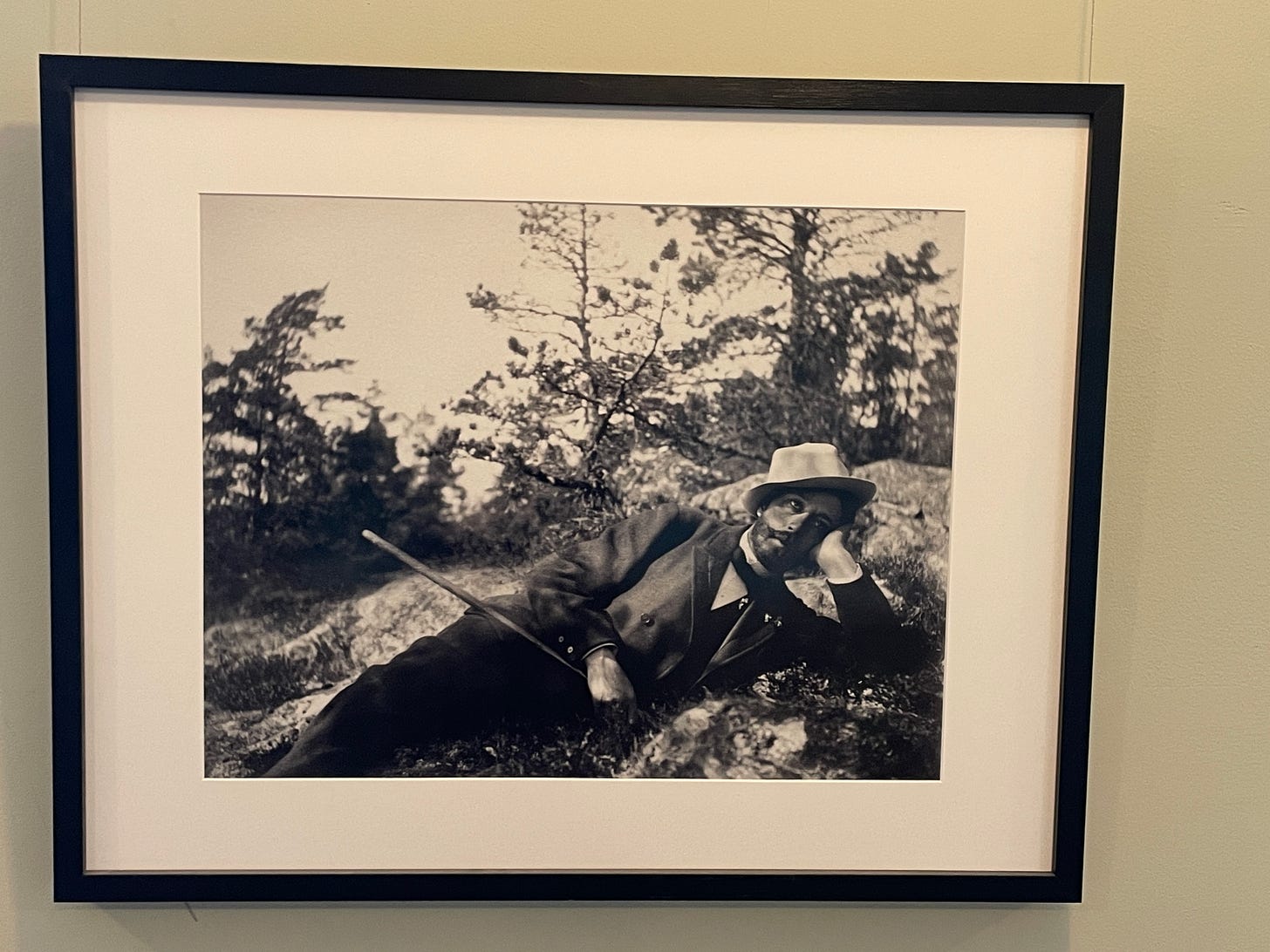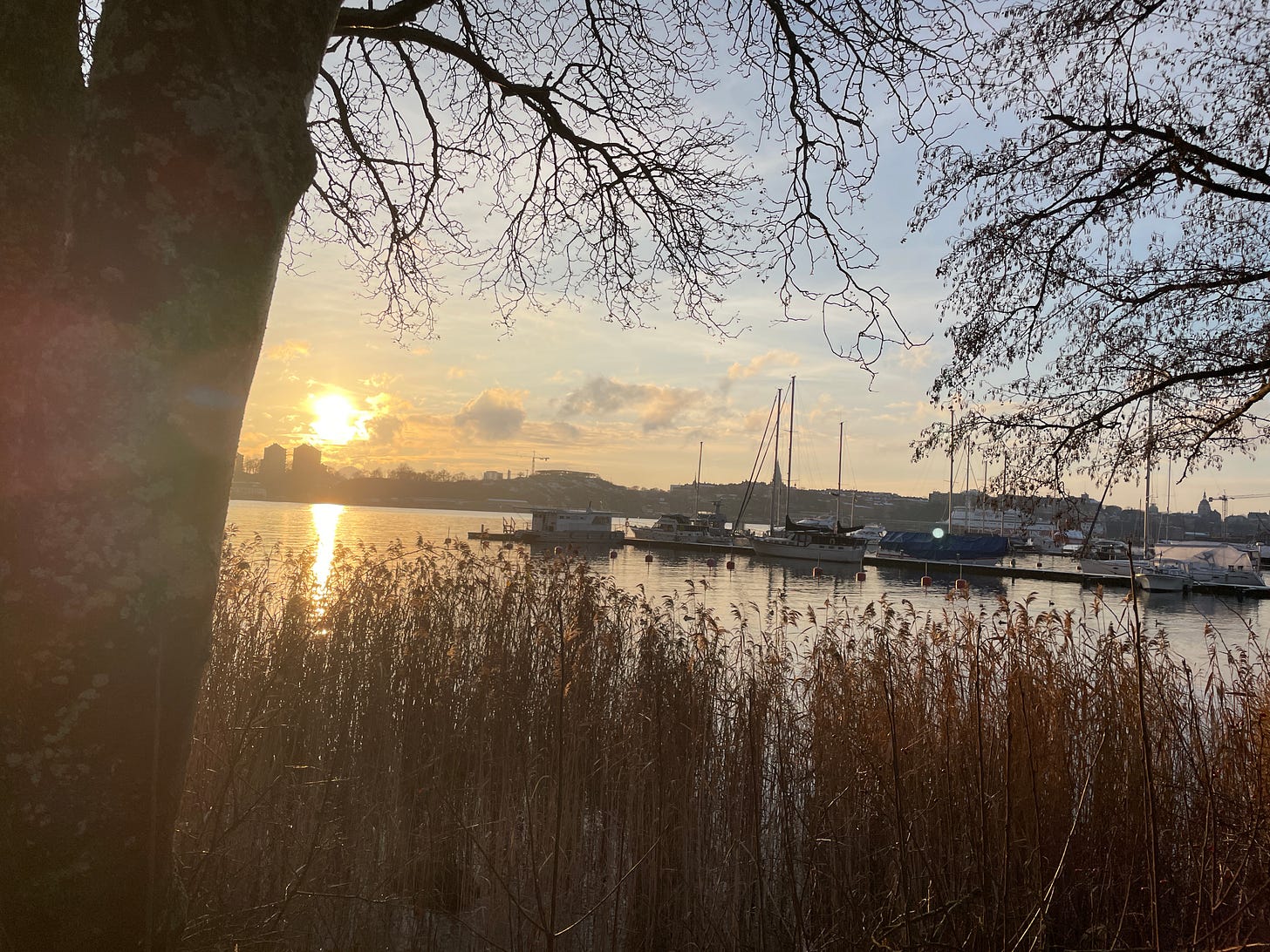Hello and greetings from Stockholm!
Syria (a country I loved so much I thought, after visiting it a second time, of moving to Damascus for a while to study Arabic) has just been freed from Assad, a momentous twist in its turbulent history that could lead to good things or bad. But I am not going to think or write about those things today because a) I'm in a city bursting with cultural wonders waiting to be explored and b) it’s my birthday!
On the one hand, I’m shockingly old. 61! Who, at fifteen, ever dreams of the day when they’ll be 61, studying jowls that seem to have appeared from nowhere and seeing expressions on their face in iPhone snaps that look alarmingly like their father when he was in one of his bad moods?
On the other hand, I’m 61! Hooray! I’ve had 22 years of life I didn’t think I’d have when I first went to the doctor with unbearable itching, caused by scabies caught from hotel sheets in Goa, and casually mentioned that I’d found a lump in my breast. I’m still not quite sure what I’m going to do when I grow up, but I know it’s going to involve a lot of coffee and cake and wine and crisps and art, because what would we all be without those hallmarks of civilisation at its finest?
Stockholm does coffee and cake extremely well. Sweden, in fact, does coffee and cake extremely well. I was brought up by the doyenne of coffee and cake, born on the West coast of Sweden in a town called Halmstad. My mother met my (very) British father walking up a hill in Heidelberg, when she was eighteen and he was 21. They were both doing a summer course in German. She couldn’t speak any English. He couldn’t speak any Swedish. After they parted, they wrote love letters to each other in German and two months later my father sent my mother a telegram in English? It was short and to the point: “Will you marry me?” My mother’s reply was one word: “yes”.
They married two and a half years later, in a white stone church on a hillside dotted with wild roses. After a year in a bed-sit in Earls Court, with a shared bathroom and kitchen, they lived in Bangkok, where my sister was born and then in Rome, where my brother and I were born, and then (in a slightly dramatic shift) in suburban Surrey, where I grew up.
Through it all, my mother would have coffee several times a day, always served with a tiny little cake. She brought me up to believe you should never have coffee without a tiny bit of cake. For me, it’s practically one of the ten commandments and a lot easier to follow than some of the others.
My darling husband is treating me to this birthday trip to this acme of civilisation and efficiency. (I met him, by the way, at 51, after decades of yearning for someone to go on minibreaks with and recently decided that we should probably actually do some.)
We had almond croissants at Heathrow. We had gingerbread biscuits on the plane. I’ve lost count of the number of cakes and pastries we’ve had since we arrived. It’s part of the Swedish philosophy: sprinkle some sweetness in your life, because the winters are dark and you never know how long you’ll be here.
The winters here are indeed dark. The sun rose today at 8.32am and will set at 2.49pm. 2.49pm! Just before I arrive at my cousin, Anna’s, for birthday “fika” which means, you’ve guessed it, coffee and cake. But Swedes really do know how to do winter. Everywhere you go, there are Christmas stars in the windows, and those battery-operated Christmas candles. Cafes and restaurants nearly all have real candles on the tables. Last night, we went to have dinner with some new, dear friends and there were candles everywhere.
The Danes call it “hygge”, this feeling of cosy conviviality and contentment. The Swedes call it “mys”. Whatever you call it, it’s a delightful counterpoint to the slightly patrician beauty of this city so often called the Venice of the North. Stockholm is a city on fourteen islands, a city where eighteenth-century palaces gaze out at expanses of water that are sparkling blue in summer and in winter can turn to vast slabs of ice. It’s a city that feels both aristocratic and democratic, both historic and sleekly modern.
And it’s full of art and culture. On our first morning, we went to Prins Eugens Waldermarsudde, billed as “Sweden’s most beautiful art museum”. I haven’t seen all of them, of course, but I’d say there’s a pretty good chance that that’s right. Prince Eugen was the youngest son of King Oscar II and Queen Sophia, born in 1865. He fell in love with art as a teenager and studied under the painter Wilhelm von Gegerfelt while at Uppsala university. His parents weren’t thrilled by the prospect of their youngest son becoming a full-time artist and, perhaps, fop, but they didn’t get in his way. He went off to study art in Paris, was made the first honorary member of the Royal Swedish Academy of Fine Arts in Stockholm and bought Waldermarsudde, a beautiful mansion house on the island of Djurgarden (just down the road from the Abba museum) at the turn of the century.
The house is beautiful. The garden is beautiful. The furniture is elegant, the interiors finely styled and the views are stunning. But this is not just the plaything of a royal aesthete. His own paintings - lyrical, romantic, dreamy - are also gorgeous. This is what I want to be when I’m grown up: an artist prince with a stately home in Stockholm.
Here he is, lying on a rock. A touch self-conscious, but he is certainly trying hard to commune with nature:
This is my favourite room in his house. It was filled with the smell of hyacinths:
These are some of his bookshelves:
This is a view from his garden. Nearly sunset and it’s only lunchtime!:
I would also like to tell you about our trip to the Nordic museum, a museum you could literally spend all day in, and to Skansen, the world’s oldest open-air museum, with old houses brought from all round the country to show how Swedes lived in the pre-industrial era. We ate almond cake (of course) and saw a Swedish man and woman in national costume in a wooden house lit by candles play Bach on a keyed fiddle called a nyckelharpa.
I would like to tell you about our trip to Millesgården, a cultural oasis on the island of Lidingö created by the sculptor Carl Milles and his artist wife Olga. There’s a sculpture garden overlooking the lake, an art gallery with his sculptures and their home, packed with artistic treasures including a 17th-century chamber organ said to have been played by Leopold Mozart, a landscape attributed to Claude Lorrain and a Madonna and child ascribed to Donatello.
Now I’m torn. Should I be Prins Eugen or Carl Milles? Both, clearly, had very enviable lives – and very gorgeous views.
Still, I’ve run out of time. I need to put on some warm clothes and set off to visit my cousins and celebrate the fact that, at a turbulent time in history, and with more than a few turbulent times in my own life, I am more grateful than I can say to be here, happy, curious and alive.










Waldemarsudde is my favourite place in Stockholm and probably among my top places in the world. I am currently drafting an article about my dream job (inspired by the Artist's way) about being a head florist at Waldermarsudde- it is a thing/there is a person doing that and she is absolutely brilliant at tie) Milles gården is a delight too, but a bit off the beaten path. Tyska Galleriet on Djurgården is also absolutely fabulous
Still catching up... Stockholm is such a beautiful city.
My big recommend would be the Vasa museum. And the cakes.